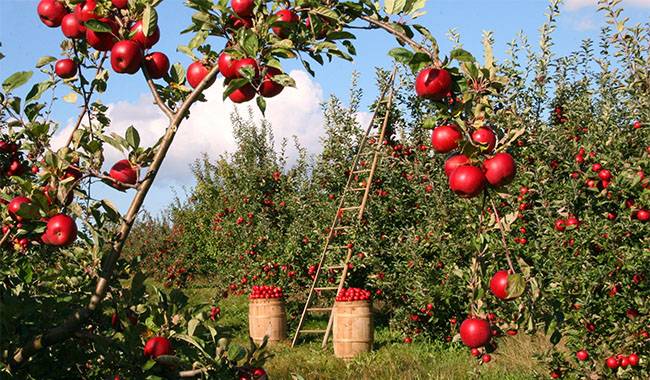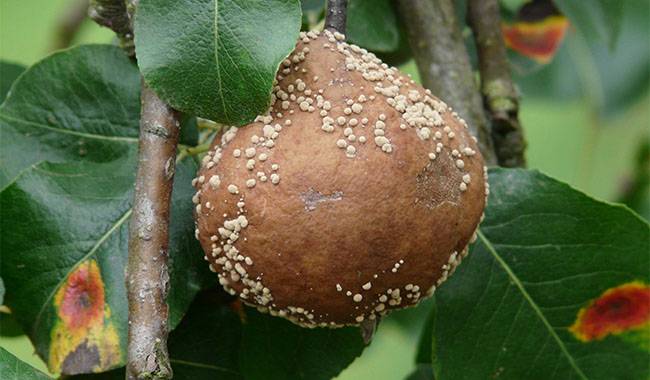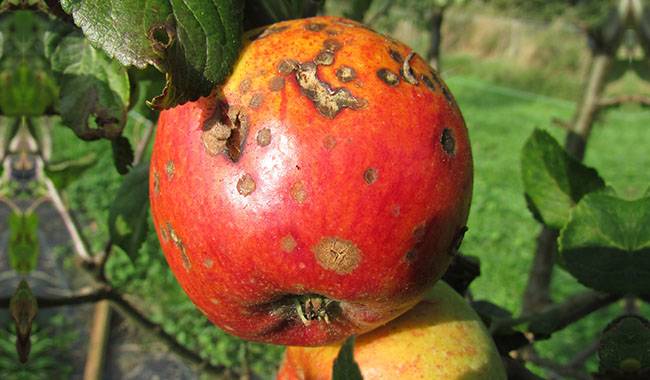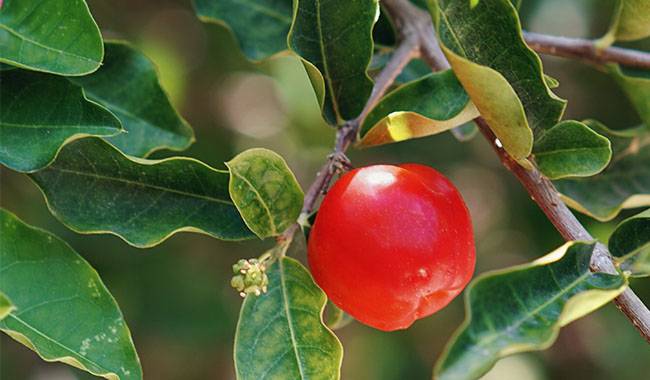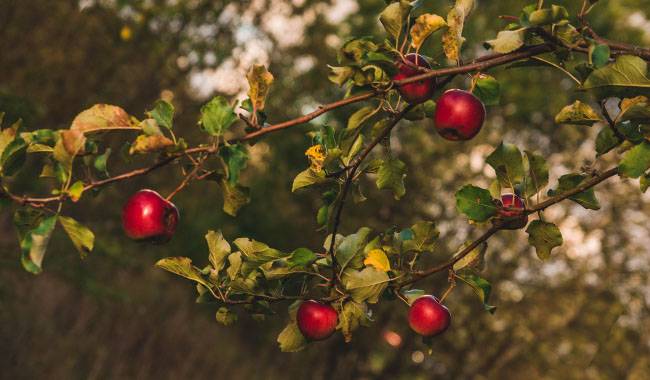
The apple tree is the most widespread of the seed-fruit crops. Gardeners seem to be familiar with it and it has been present in agricultural practices for a long time. Many varieties were developed for different regions and learned to reproduce and grow.
But no, it happens that an apple blooms “in full bloom”, but the harvest is not absolute, or it exceeds small, with only one or two apples.
Why do apple trees bloom but not bear fruit? What should be done about it? We will answer these questions in this article.
If an apple tree blooms (sometimes quite abundantly) but doesn’t bear fruit, there could be a number of reasons for that, really. It could be bad planting, bad weather, too much haste, too early fruiting, no pollinator, etc. Let’s look at the main reasons in more detail.
Incorrect planting of apple trees
Before planting an apple tree, it is very important to choose a good place for it. It is better to protect it reliably from the north wind with a house wall, fence, or something similar.
Be sure to find out the groundwater level on the plot. For vigorous apple trees, the water table should be no more than 80inch (2 meters) from the soil surface; for dwarf and super dwarf trees, one and a half meters from the soil surface is sufficient.
Apple trees must be planted in a place open from the south, in full sun, and where there is no stagnation of melting rain or irrigation water.
The place should be flat, without depressions, with uneven heights, and the soil, well filled with organic matter (3-5 kg of well-rotted manure per square meter) and mineral fertilizers (one tablespoon of nitroglycerine per square meter).
When planting, try not to deepen the root neck, where the roots transition to the trunk, preferably at soil level, or 0.6inch (1 cm) higher. If you bury it, you will significantly delay the apples’ entry into fruition.
As for the place of grafting located 2-3inch (5-8 cm) above the root neck – it should be at this height, leaving it from the soil surface, deepening it is absolutely impossible, in this case, the tree will die.
Some gardeners are in a hurry and plant trees under slopes, which also significantly delays the entry of plants into the fruiting period, although apple trees can also bloom.
In order to straighten the tree, it is necessary to knock in a metal pin on the side opposite to the slope and to straighten the plant with the help of pieces of rubber thrown on the pin and rings on the trunk. Then it is tied to a sturdy stake to keep it upright and left in this way for five or six years.
The apple tree is too young
Sometimes, fruit growers are so anxious that they just plant an apple tree in the ground and try to get it to bloom and produce its first fruit right away. In fact, it is not so simple, and even apple trees that bloom sometimes finish fruiting later than when they first bloomed.
It is a biological rhythm of the development of a biological organism that can remotely echo, for example, the biological development of a female organism, that is, one may not even dream of having children until the biological clock kicks in.
An apple tree first needs to have enough, what it considers the root system, the above-ground part, to become stronger in a new place, just like “testing” it for flowering, and then start to bear fruit, year after year, increasing the harvest rate, i.e. the number of pods on the apple.
To avoid something as unpleasant as waiting years to harvest your own grown apple trees, try to find out from the nursery seller (this is where you should buy your apple seedlings) after how many years the variety enters fruition.
It is normal for modern apple varieties to bear their first fruit in the fourth or fifth year, and it is possible to flower a year or even two years earlier. However, it is possible for a variety to go seven or even eight years without bearing fruit and only flowering (and, although it may surprise you, this is the norm).
Of course, in general, the age at which an apple tree enters fruiting, and by and large, adulthood, depends on the rootstock selected. The rootstock is also an apple tree, but wild, and it can be seeded and cloned, i.e.: tall growth (just seeded), medium growth, semi-dwarf, and dwarf.
On seed rootstocks, which are now used only by amateur gardeners. In fact, there is nothing easier than sowing seeds and getting seedlings on them you can wait for the harvest ten years later. In addition, the tree will be very tall and will first develop a root system and above-ground parts, which will require its prosperous groundwater location deeper than two meters.
If the apple trees are grafted on clonal rootstocks and they can grow moderately, then you can taste the first apples three years after planting or at most five years later. Semi-dwarf – then you will get apples in a few years, or at most four years. Dwarf – these are the lowest trees, with an underdeveloped root system – so the water table can reach about 60inch (1.5m) for them and the harvest will be done in two or three years, usually no more.
If it’s a rootstock problem and your apple tree is flowering but not fruiting, it’s not a problem at all.
Also, the exact age of the apple tree cannot be told with certainty at the time of purchase; it may be artificially inflated so that you are more willing to buy an apple tree, or a wild apple tree may be sold by mistake or on purpose. Again, a wild apple, but it can be seen by the blue-purple leaves and the thorns at the base of the shoots, so be careful.
Abundant nitrogen in the soil
No matter how strange it may seem, both a lack and an excess of fertilizers in the soil can lead to the fact that the apple tree will bloom profusely, but not bear fruit. This usually happens at high doses of nitrogen fertilizers in the soil. The plant grows from an excess of nitrogen, develops, blooms, but does not form fruit. It “fattens”, as the people say.
You can solve the problem by trying for several years not to apply nitrogen fertilizers to the soil at all.
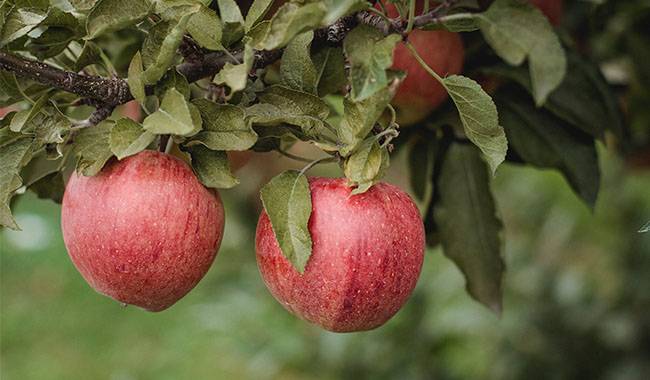
Affected flower buds
Flower buds may be affected at the same time: flower buds may be damaged by both back frost and flowering periods.
As for frost, it is more difficult to cope if the apple tree does not flower at all. But the leaves do, this means that it reacts to the so-called provocative thaw during the winter.
When flower-producing buds start to come out of dormancy, they die, and when winter temperatures become normal, the leaf buds survive because they are more resistant to the provocations of winter weather.
Sometimes the buds of apple trees die from back frosts, and when they bloom and all seems well, but an uninvited frost comes and causes the flowers to die, then surely there will be no harvest.
You can try to help, but it is not a sure thing. In order to raise the temperature of your garden, you can have fireworks on the outskirts of your garden when it is in bloom and the frost arrives. Make a deal with your neighbors beforehand – do they mind living in the smoke for a few days until the frost subsides.
Then there is the difficult job of making large piles of wet straw or other similar material that will smoke and smolder, but not burn, and constantly maintaining these fires to keep the garden in the smoke.
This is a fairly effective technique, but the physical cost is high – you need to maintain the fire almost constantly in the garden, and you can only do this effectively in windless weather when the smoke “stands” in the garden and if there is a breeze, it is blown out of the garden and the effect of the smoke is negligible.
You can also try finely dispersed watering of apple trees with small drops of water in a hose with a special nozzle, which freezes on the flowers and will give them heat, such a method can also be useful.
As for flower beetles, caterpillars that eat up the contents of apple blossoms. You will need to use an insecticide that is allowed for the current season. The first treatment should be applied before the buds open, the second before flowering, and the third after flowering.
Safer preparations such as 2% Bordeaux mixture or 3% copper sulfate can be used. Trap tapes or Pheromone traps for egg-laying moths can also be installed on the trunk, and if this does not help, insecticides that are more damaging to the environment can be used, strictly following the instructions on the package.
Varieties without apple tree pollinators
Some growers have watched their apple trees bloom for years without seeing a single harvest for a trivial reason: they have only one variety on their plots, no pollinator variety, so there is nothing at all to pollinate the flowers. Pollen from the pollinator variety did not reach the female’s stigma, did not germinate, did not pollinate, and did not bear fruit.
In order for your varieties to pollinate reliably, you need to plant several or even three different modern varieties on the plot, making sure they flower at the same time (for their cross-pollination). If the plot is too small, you can graft plugs onto the canopy of an already growing apple tree, which then grows branches that can act as pollinators, and you can even surprise your neighbors by planting several varieties on the same tree. But don’t get excited beforehand, because in this case the pollen content may not be very high and the yield may not be high.
By the way, you can stimulate the formation of fruit by treating apple trees with boric acid. To do this during flowering, you need to buy a small bottle of boric acid at the pharmacy and pour it into a bucket of water at room temperature, melt or rain, that is soft.
After that, apple trees under 5 years old should be sprayed with this composition directly on the flowers with a backpack sprayer, half a bucket per tree, and older apple trees – one bucket per tree, or use so much of the composition that all the flowers are “washed”, which can be not much.
Incorrect pruning or crown formation
Finally, we would like to say a few words about mistakes in pruning and shaping apple trees. Sometimes gardeners start removing a lot of shoots they consider unnecessary immediately after planting. In this case, the balance between the root system and the above-ground parts is upset, and the apple tree restores this balance year after year by building up its vegetative mass. It does not flower and fruit at all, although it may flower, then all or most of the flowers become insignificant.
Other, more “advanced” gardeners, skillfully wielding shears, remove so-called unnecessary apple “growth” – small rings, spears – and treat them as insignificant bent buds. So, strictly speaking, this is impossible; most of the fruit is formed on them, and the apple tree, recovering from such a shock, can certainly bloom, but it will probably drop flowers and use its strength to restore the fruiting branches you removed.
When pruning an apple tree, it is imperative to inspect the crown well and remove tops that grow vertically upward, they pull off nutrients. In some cases, they can bloom, but do not give fruit or give them very late, when they develop as much as possible, at the same time strongly thickening the crown. Such tops need to be cut into a ring or bend some to angles close to straight, then they can give a harvest next year.
These are some simple rules to make an apple tree not only bloom beautifully but also bear fruit richly. We hope our tips will help you.




